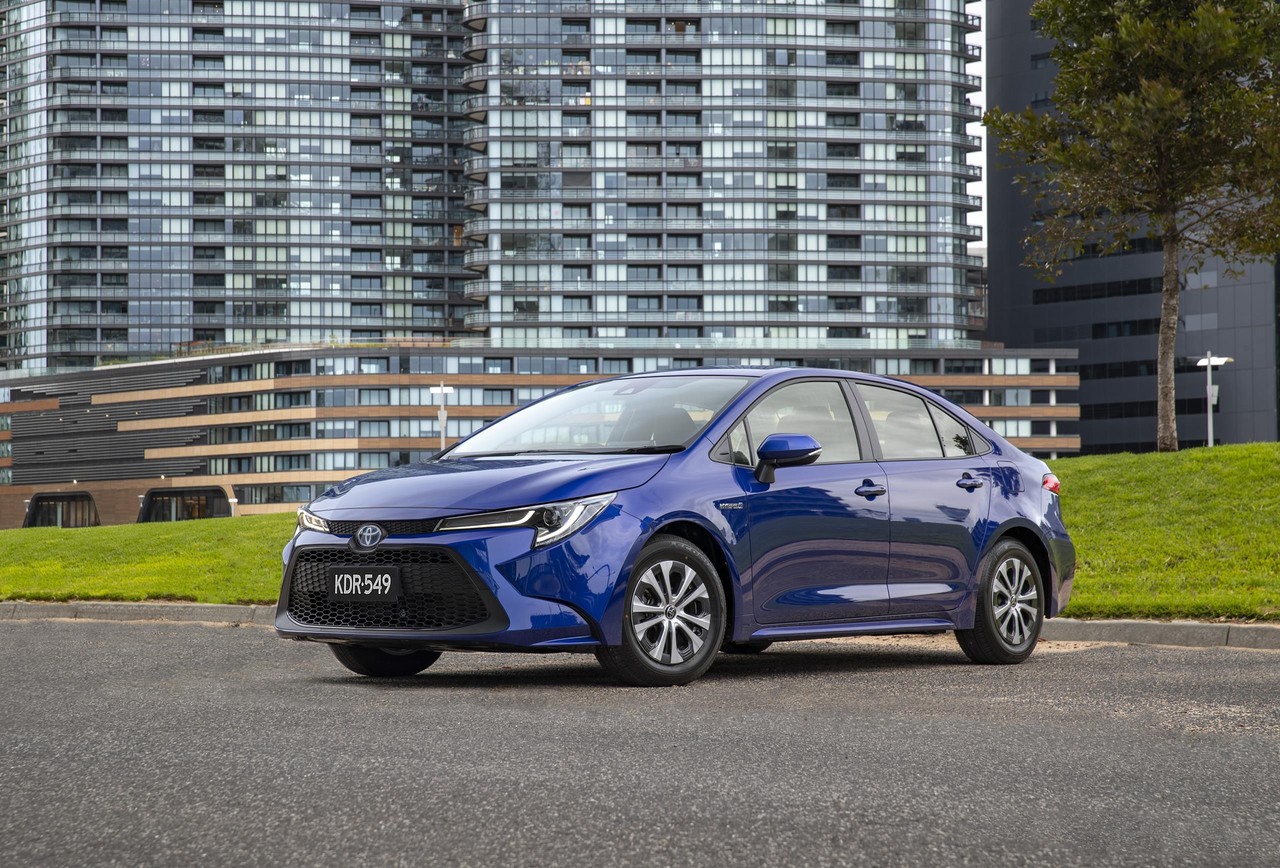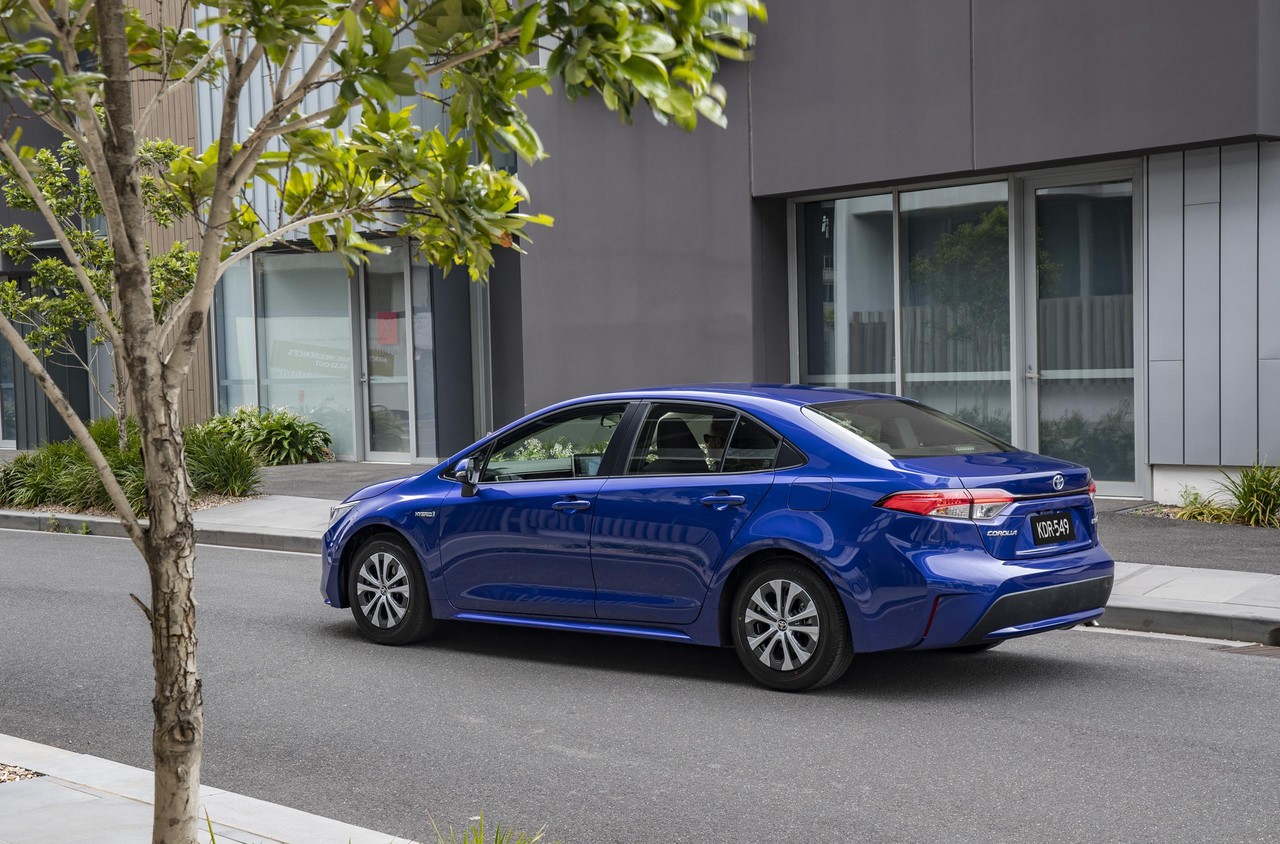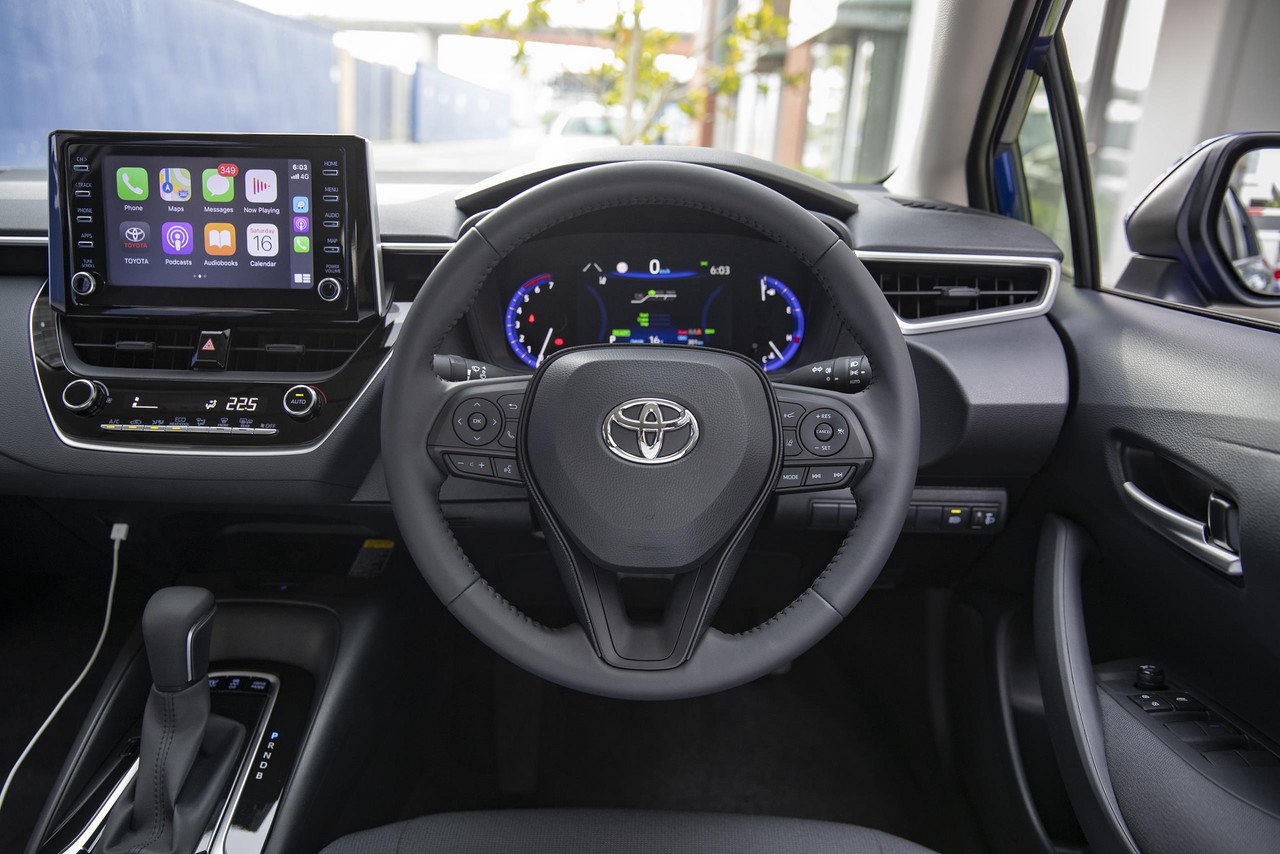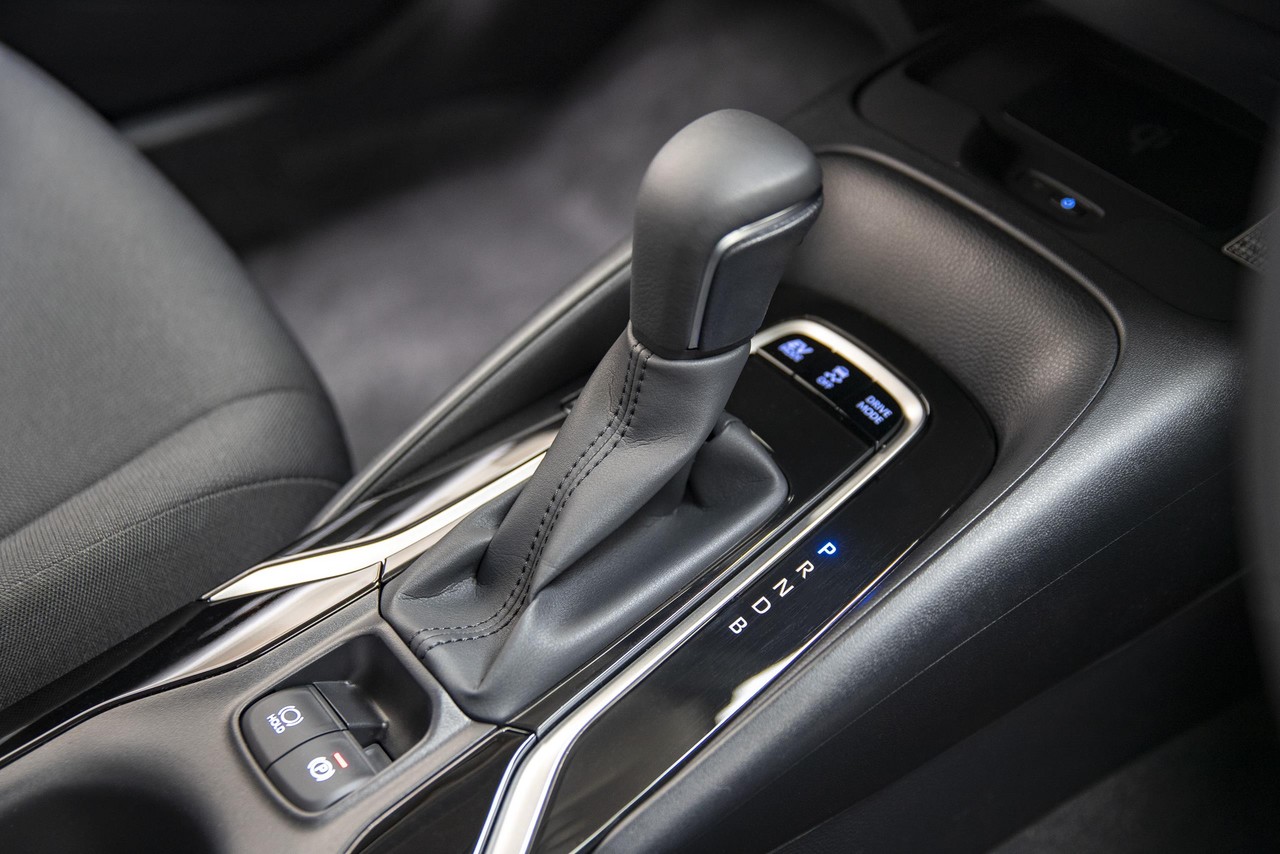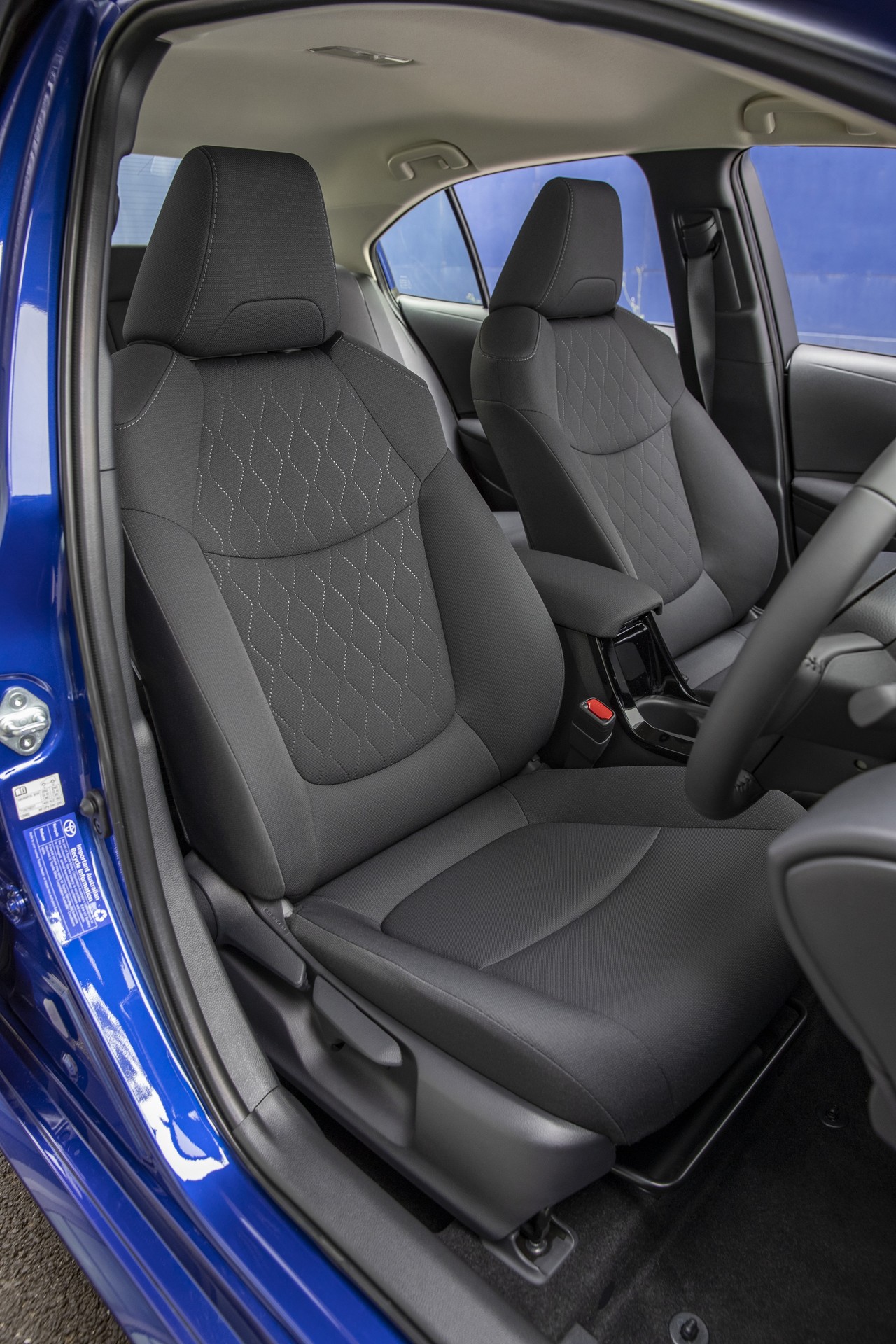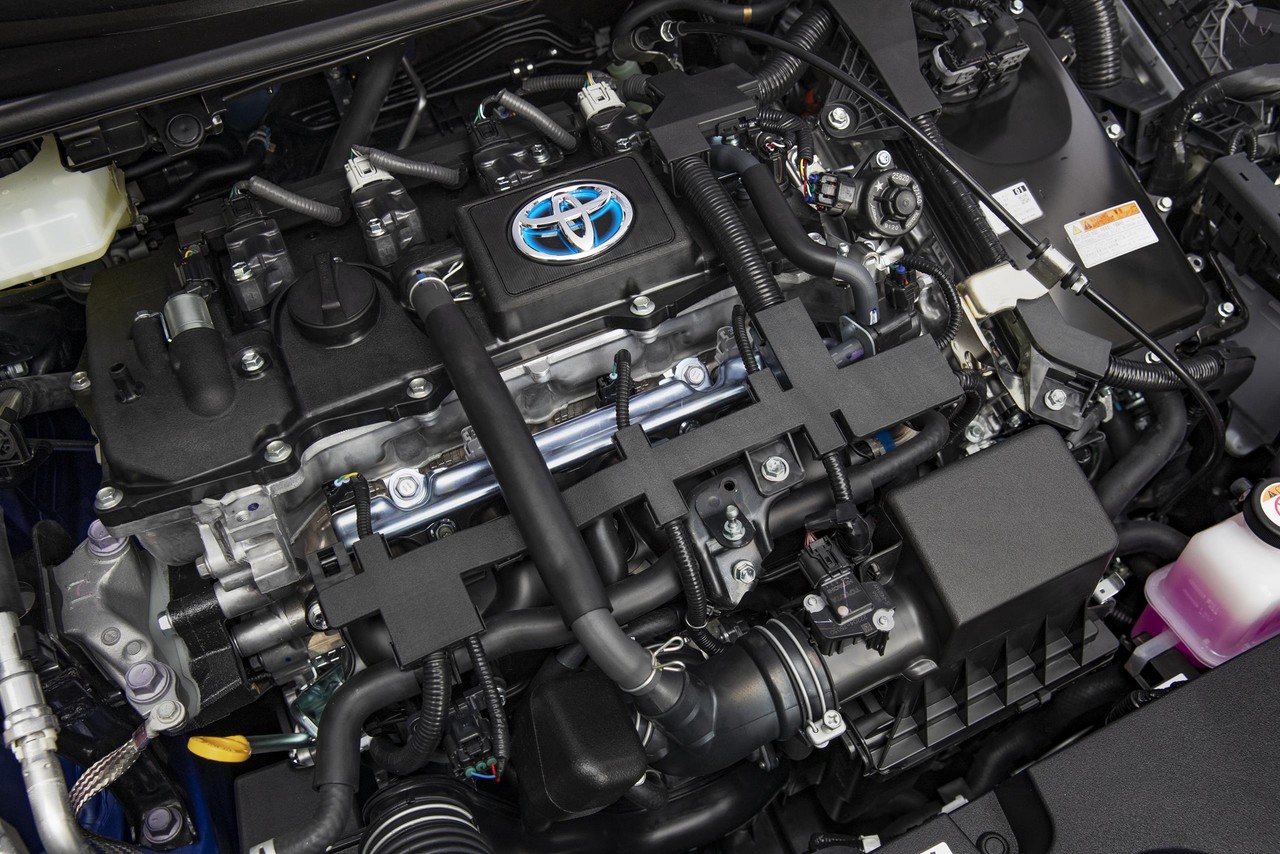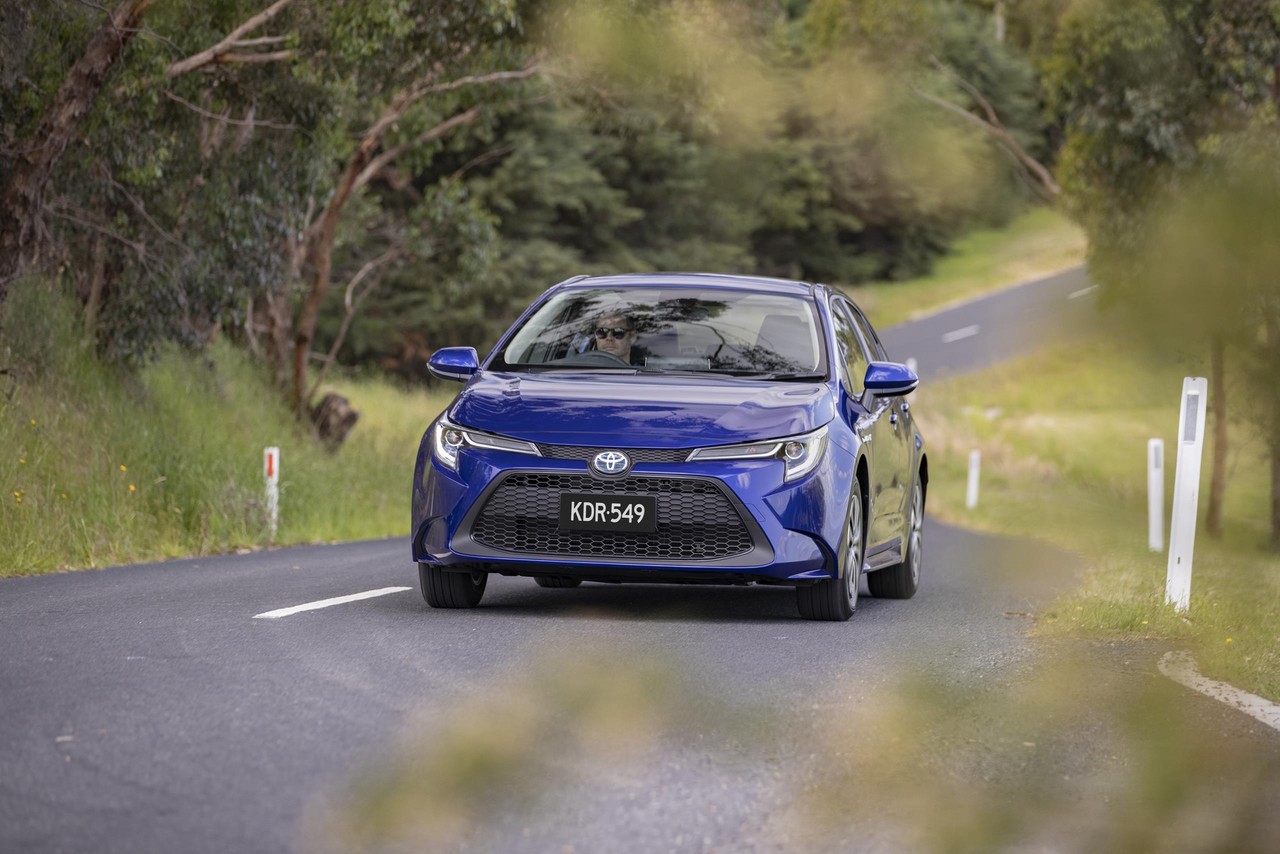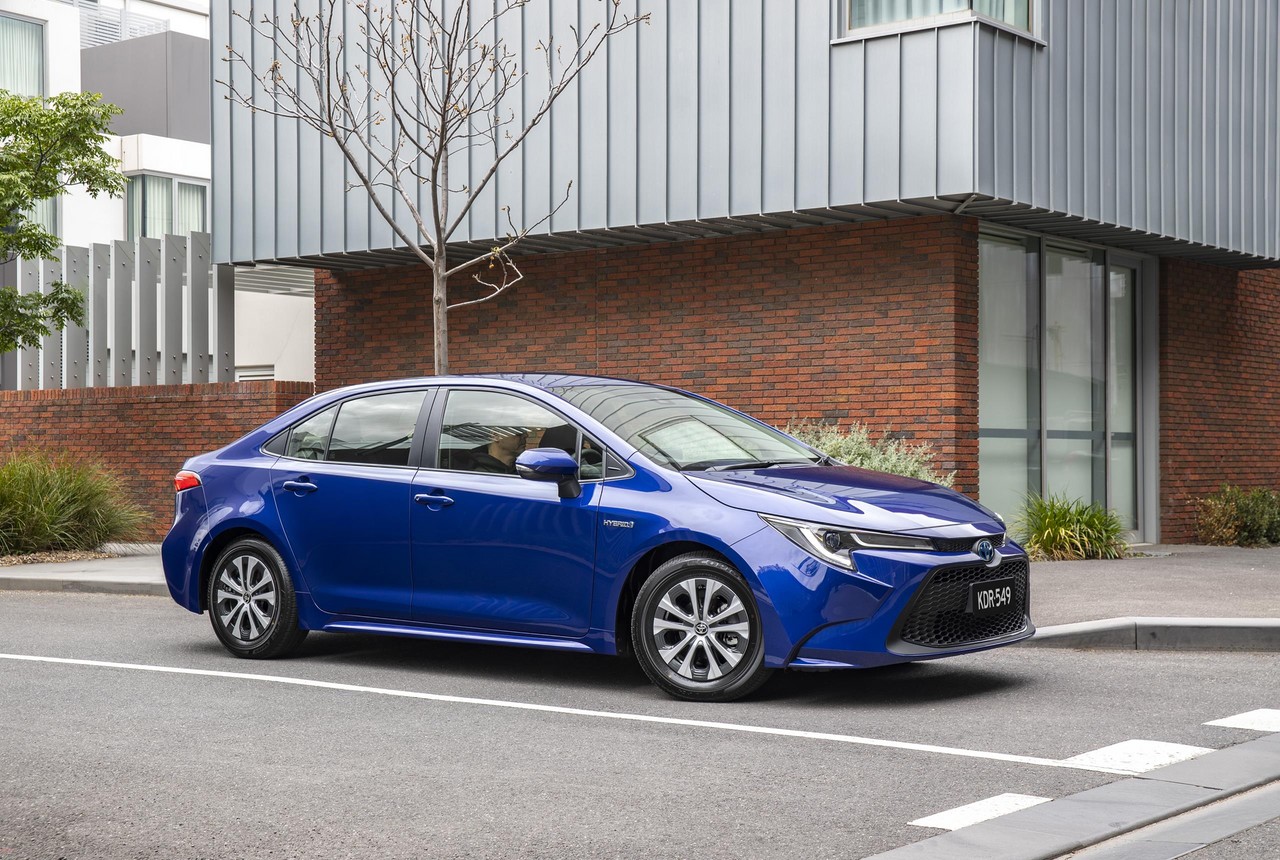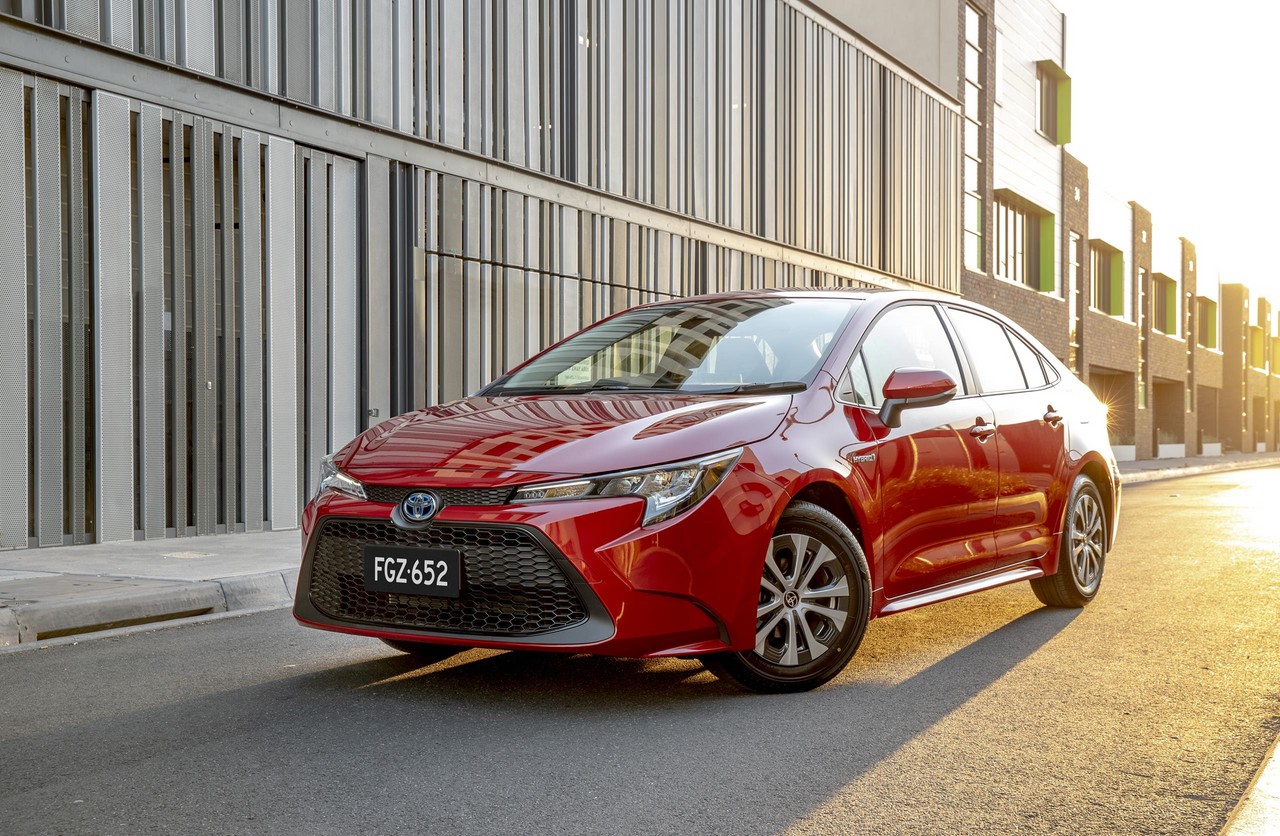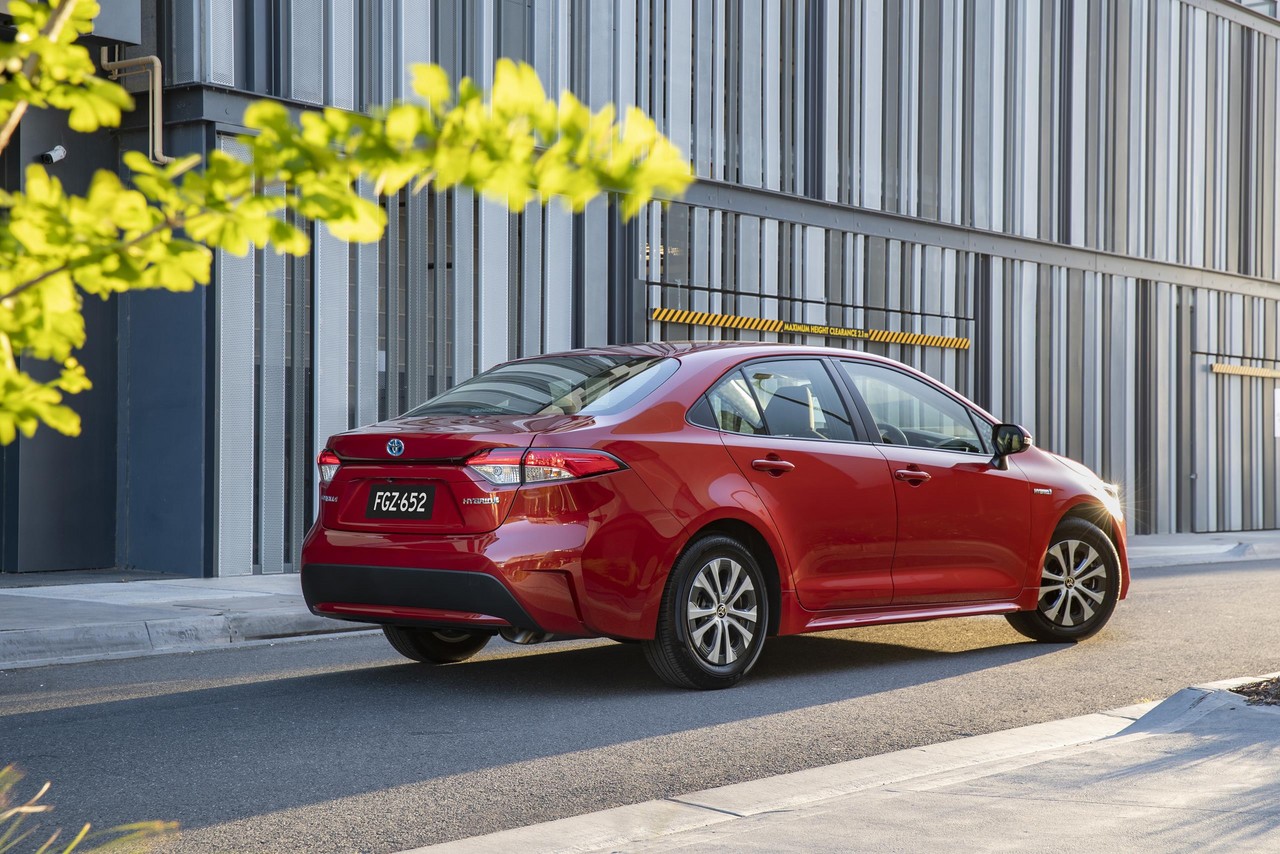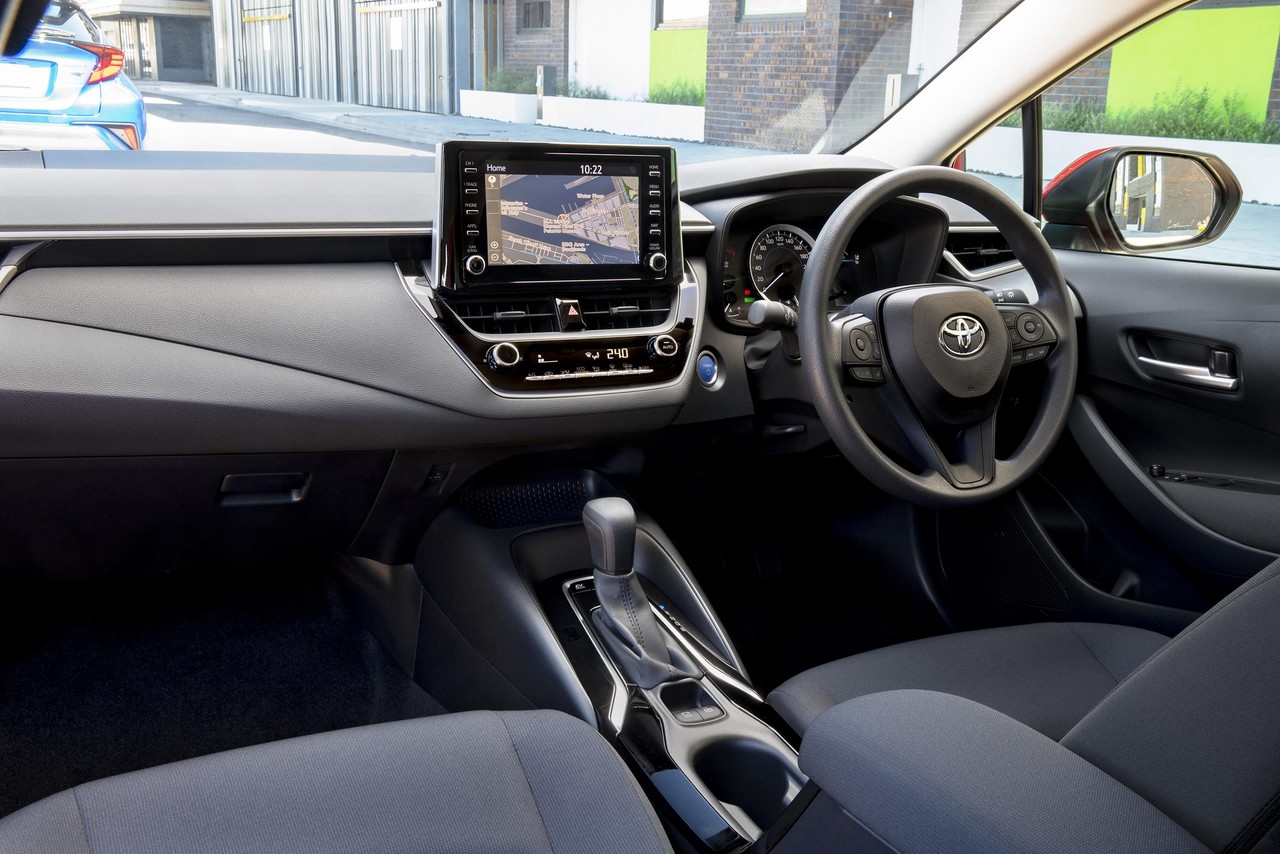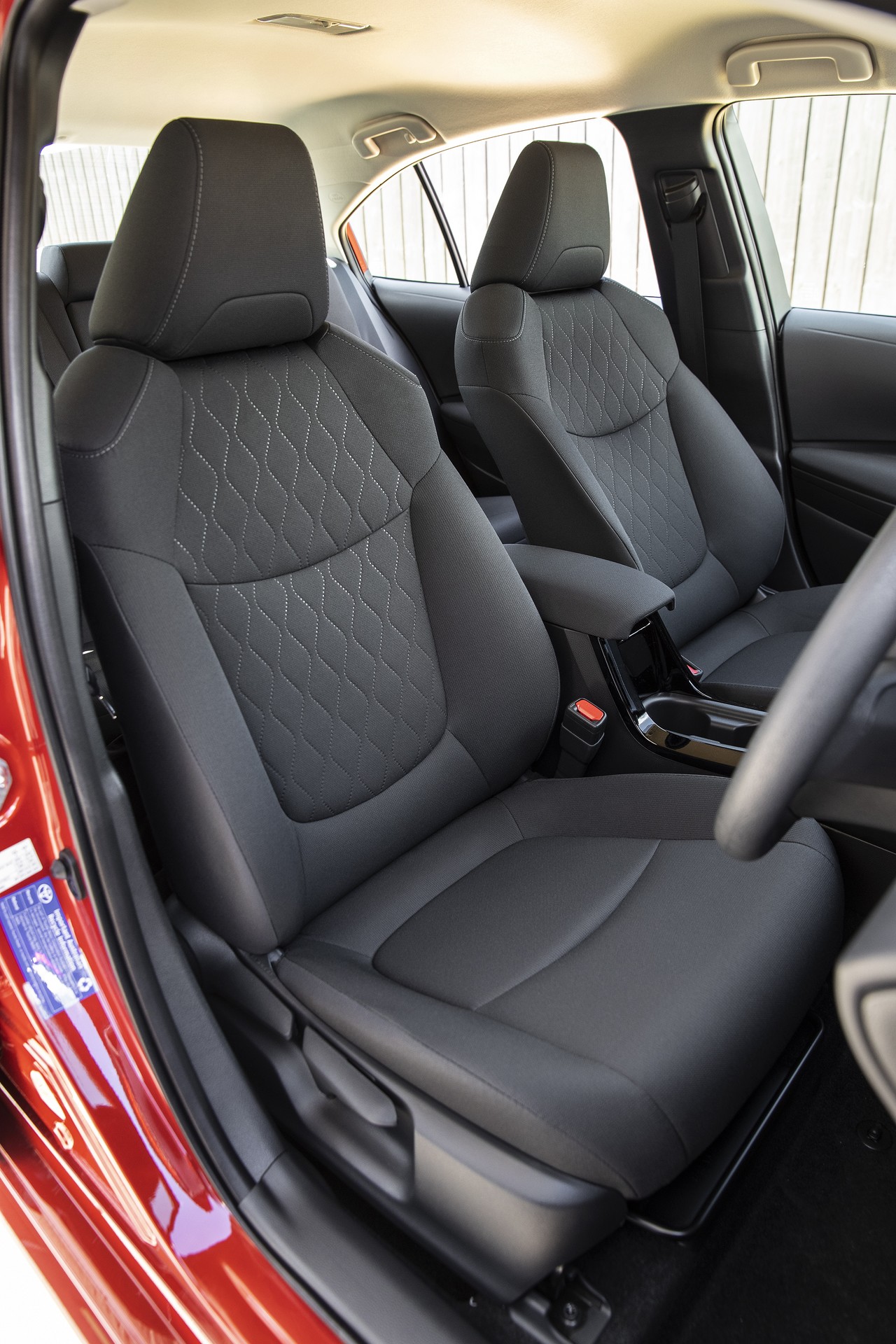
- Fuel-efficient hybrid powertrain
- Autonomous Emergency Braking (AEB) and LED headlights fitted as standard
- Five star safety rating
- Large boot (470 litres)
- Impressive ride quality and good body control
- Blind Spot Monitoring should be standard across the range
- Rear Cross Traffic Alert (RCTA) not available
Overview
Released in Australia in November 2019, the Toyota E210 Corolla Hybrid Sedan was a small, front-wheel drive vehicle. The Toyota E210 Corolla Hybrid Sedan was powered by a 1.8-litre four-cylinder petrol engine that was mated to a continuously variable transmission (CVT). As per the table below, the E210 Corolla Hybrid Sedan range consisted of Ascent Sport and SX variants.
E210 Corolla Hybrid: 2ZR-FXE engine
Shared with the Toyota XW50 Prius , the 1798 cc 2ZR-FXE engine had a die-cast aluminium alloy block, an alloy cylinder head, multi-point fuel injection, double overhead camshafts, four valves per cylinder, Toyota’s ‘Variable Valve Timing with intelligence’ (VVT-i), cooled exhaust gas recirculation, direct ignition and a compression ratio of 13.0:1. As an Atkinson cycle engine, the 2ZR-FXE had a higher expansion ratio than a conventional Otto cycle engine, making the expansion stroke longer than the compression stroke.
The 2ZR-FXE engine ran on 91 RON unleaded petrol and, over the combined ADR 81/02 test cycle, fuel consumption for the Toyota E210 Corolla Hybrid Sedan was 3.5 litres per 100 km. According to Toyota, the 2ZR-FXE engine achieved a thermal efficiency of 40 per cent, the highest in the world.
| Motor | Trans. | Peak power | Peak torque |
|---|---|---|---|
| 1798 cc 2ZR-FXE petrol I4 | CVT (P610) |
72 kW at 5200 rpm | 142 Nm at 3600 rpm |
| Permanent magnet AC electric motor | 53 kW | 163 Nm | |
| Combined | 90 kW | N/A | |
Hybrid components
The transaxle of the Toyota E210 Corolla Hybrid Sedan housed four components:
- Motor-generator #1 (MG1): served primarily as a generator, converting surplus power from the petrol engine into electricity which could be stored in the hybrid battery. MG1 also served as the engine’s starter motor;
- Motor-generator #2 (MG2): the electric drive motor which also acted as a generator when the car was in regenerative braking mode. MG2 powered the car from start-up, at low speeds and in EV (electric vehicle) mode; it was also the sole propulsion method when the vehicle was in reverse;
- A single planetary gear; and,
- A reduction gear to the final drive.
The Power Control Unit (PCU) housed the inverter/voltage booster, a DC/DC converter for auxiliary power and the electronic control for the motor-generators. Instead of a belt-driven alternator, the E210 Corolla Hybrid used a DC/DC converter to recharge the 12-volt auxiliary battery by drawing power from the hybrid battery.
Body and dimensions
Based on the ‘Toyota New Global Architecture’ (TNGA), the E210 Corolla Hybrid Sedan was underpinned by Toyota’s GA-C platform which was shared with the Toyota C-HR and Toyota XW50 Prius . Compared to the E170 Corolla Sedan which it replaced, the E210 Corolla Hybrid Sedan was 10 mm longer (at 4630 mm), 5 mm wider (1780 mm) and 25 mm lower (1435 mm), though wheelbase length was unchanged (2700 mm); boot capacity was also unchanged at 470 litres. Finally, the E210 Corolla Hybrid Sedan had a kerb weight of approximately 1380 kg.
Suspension and steering
The Toyota E210 Corolla Hybrid Sedan had MacPherson strut front suspension and multi-link rear suspension.
The E210 Corolla Hybrid Sedan had rack-and-pinion steering with electric power assistance. The steering also featured an ‘active cornering assist system’ which used the actuators and sensors of the electronic stability control system to apply brake force to the front inside wheel when cornering to reduce understeer.
Safety equipment
Standard safety equipment for the Toyota E210 Corolla Hybrid Sedan included dual front airbags, a driver’s knee airbag, front seat-mounted side airbags, full-length curtain airbags (i.e. for front and rear occupants), ABS, electronic brake force distribution, brake assist, electronic stability control, traction control and front seatbelts with pre-tensioners and load limiters.
As standard, the Toyota E210 Corolla Hybrid Sedan was equipped with the following ‘Toyota Safety Sense’ safety technologies:
- Pre-Collision System (PCS) with pedestrian detection and Autonomous Emergency Braking (AEB): operating at speeds above 10 km/h, PCS used a front-mounted monocular camera sensor and millimetre-wave radar sensor to detect vehicles and pedestrians on the road ahead, during the day or at night; cyclists could also be detected during daylight. If there was a collision risk, the driver would receive an audible warning and a ‘Brake’ message would be shown on the multi-information display. In its second stage, Pre-Collision Brake Assist would prepare the braking system so that it would respond faster if the brake pedal was depressed. If the driver did not react and a collision was imminent, maximum braking force would be applied automatically to reduce the severity of the collision;
- Active Cruise Control (ACC): using the same millimetre-wave radar as PCS, ACC could maintain a safe distance from the vehicle ahead when cruise control was active – for models with CVTs, this included applying the brakes to bring the vehicle to rest if necessary and accelerating back to the pre-selected cruising speed when safe to do so;
- Lane Trace Assist with steering assist and lane centring: Lane Trace Assist operated when Active Cruise Control was engaged and used the forward-facing camera to detect lane markings. Lane Trace Assist would then provide steering assistance to keep the vehicle in the centre of its lane, even on curved roads. Where lane markings were not visible, Lane Trace Assist used the position of the vehicle ahead so that the E210 Corolla Hybrid Sedan would follow its path;
- Automatic High Beam: operating at speeds above 30 km/h, Automatic High Beam would automatically switch between low and high beam lighting according to ambient light conditions. As such, Automatic High Beam used the windscreen-mounted camera to detect the headlights of oncoming vehicles or traffic ahead and, if detected, would automatically switch to low beam to avoid dazzling other road users; and,
- Road Sign Assist (RSA): the windscreen-mounted camera could recognise speed limit signs so that the speed limit would be displayed on the multi-information display (MID) in the instrument cluster.
The Toyota E210 Corolla SX Hybrid Sedan was further equipped with a Blind Spot Monitor which used radar sensors mounted on the rear corners to detect vehicles up to 60 metres behind the E210 Corolla and in adjacent lanes. If detected, the driver would be alerted to their presence by the illumination of LED warning indicators in the door mirror on the side of the E210 Corolla, and the LEDs would remain illuminated while there was another vehicle in the driver’s blind spot. If the driver operated the indicators to move into the lane where there was another vehicle in the driver’s blind spot, the LEDs would flash rapidly.
ANCAP safety testing
For ANCAP’s safety ratings , the results of the Toyota E210 Corolla hatch were also applied to the Toyota E210 Corolla Hybrid sedan. As such, the E210 Corolla Hybrid Sedan received a five star safety rating which included a 96 per cent adult occupant protection rating and an 83 per cent child occupant protection rating. In the frontal offset test, protection of the driver’s head, thighs, feet and left lower leg were rated as good, though protection of the chest and right lower leg were rated as adequate (i.e. a slight risk of serious injury). In the side impact and pole tests, however, maximum points were awarded.
Wheels, tyres and brakes
The Toyota E210 Corolla Hybrid Sedan had 255 mm by 25 mm ventilated front brake discs and 265 mm by 10 mm solid rear discs. As standard, the E210 Corolla Hybrid Sedan had 15-inch x 6.5J alloy wheels with 195/65 R15 tyres.
Features: Corolla Hybrid Ascent Sport
The standard infotainment for the Toyota E210 Corolla Hybrid Sedan consisted of an eight-inch colour touchscreen, a six speaker audio system with AM/FM radio, Bluetooth mobile phone connectivity, voice recognition, Apple Car Play and Android Auto smartphone integration, MyToyota app, a USB input and a 3.5 mm auxiliary input.
Beyond this, standard features for the Toyota E210 Corolla Hybrid Ascent Sport Sedan include embossed fabric seats, single-zone climate control air conditioning, dusk-sensing LED headlights, LED daytime running lights, rear fog lamps, reversing camera, 60/40 split fold rear seats, remote central locking with proximity key, power adjustable and heated door mirrors, power windows, tilt and telescopic steering wheel adjustment, push-button start, an electronic park brake, a 12 volt accessory socket, a 4.2-inch multi-information display (MID) and an immobiliser.
Features: Corolla Hybrid SX
Compared to the Corolla Hybrid Ascent Sport, the Corolla Hybrid SX was further equipped with an enhanced touchscreen (enabled pinch, swipe and flick gestures), satellite navigation with SUNA live traffic alerts, digital radio tuner, a wireless mobile phone charger, steering wheel controls and a seven-inch multi-information display (MID).
Brochure and specifications
- Brochure: Toyota E210 Corolla Sedan (November 2019)
- Specifications: Toyota E210 Corolla Sedan (November 2019)
